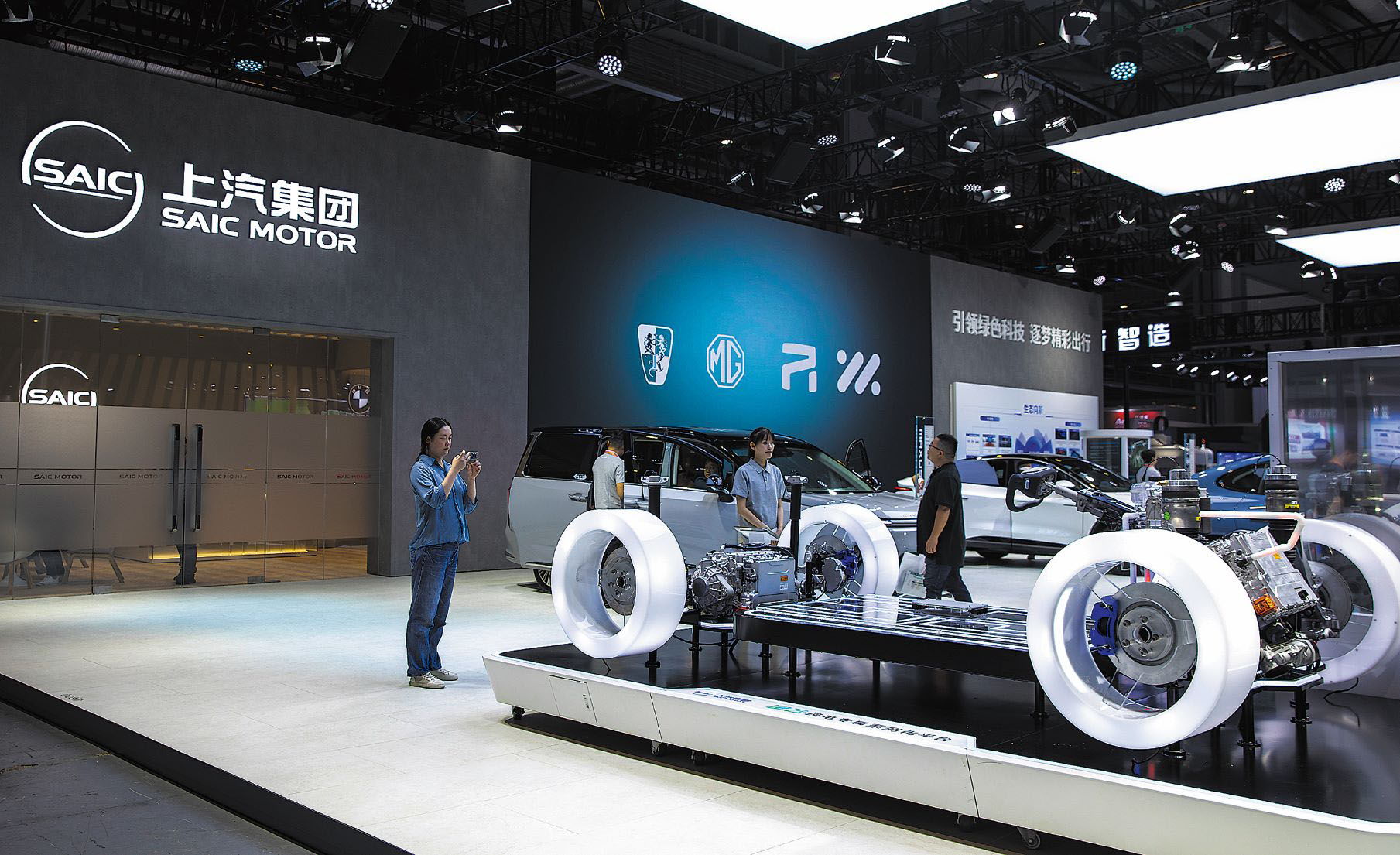Shangjie NEV brand hopes to turn around company's fortunes with Huawei tech

SAIC Motor is undergoing a profound transformation, as the once-unchallenged giant in China's auto industry struggles to explore a future in the vehicle market.
It has embraced Huawei in a partnership and is set to launch a new EV brand called Shangjie, with the first model expected to hit the market in late 2025, reported Yicai, a Shanghai-based business news outlet.
This brand, with the first model priced between 150,000-250,000 yuan ($20,600-34,400), will focus on affordability while integrating Huawei's smart driving systems, including its HarmonyOS cockpit and Qiankun intelligent driving technology.
READ MORE: Chinese NEVs shine at auto shows abroad
The partnership comes amid mounting pressure on SAIC in the market. The Chinese partner of Volkswagen and General Motors was toppled from its 18-year throne as China's best-selling carmaker by BYD last year.
Its once-profitable joint ventures are losing ground to Chinese carmakers including Geely and BYD, while its indigenous brands such as MG and Roewe have been struggling to get a foothold.
It is the result of a combination of factors, which include the poor positioning of its brands and, more importantly, its early but inefficient shift to smart onboard features and advanced driving-assist functions.
SAIC unveiled its goal in 2021 to become a technology company focused on smart and electric vehicles. It said it would earmark a budget of 300 billion yuan by 2025.
Chen Hong, then chairman of SAIC, said that outsourcing intelligent driving systems to a third party like Huawei would render SAIC "a soulless body".
At the time, this statement encapsulated the attitude of an automaker that saw itself as impervious to external technological influence. It believed its established position, fortified by lucrative joint ventures and proprietary technology, would safeguard its future.
However, SAIC has failed to come up with competitive models in a market which has seen an influx of smart models from both startups like Xpeng to established companies like Geely and Great Wall Motor.
By 2024, its long-held position as China's top-selling automaker was taken by BYD, which sold 4.27 million vehicles compared to SAIC's declining numbers.
Even more troubling, SAIC's profits plummeted, with its own electric vehicle brands, IM Motors and Rising Auto, struggling to gain traction in the market.
Under such circumstances, the "soul theory" is no longer a question for President Jia Jianxu, who took the helm of SAIC in July 2024.
"SAIC 'condescending' to partner with Huawei has a lot to do with its falling sales, which affect its stock price," said Zhang Xiang, a fellow at the Research Center of Automobile Industry Innovation of the North China University of Technology.
Zhang said SAIC needs Huawei's tech to regain consumer trust, as its subsidiary Z-One failed to come up with solutions in the smart EV sector.
Also, the Huawei brand could provide a much-needed boost for Shangjie, positioning it to compete with well-established players like BYD.
Huawei has proved its competitive edge in the smart driving and smart cabin sector, with partnerships at carmakers including Seres, said Zhang.
The Shangjie brand marks Huawei's fifth collaboration in its Harmony Intelligent Mobility Alliance, with the other four being codeveloped with private carmakers Seres and Chery as well as State-owned BAIC and JAC.
Seres, a nobody in China's car industry just years ago, shot to stardom following its partnership with Huawei to launch the Aito brand.
Its Aito M9 SUV has been the bestselling premium vehicle priced above 500,000 yuan in China for 10 months in a row. Seres boasts a market value of around 180 billion yuan on China's stock market, similar to SAIC.
Shangjie represents SAIC's latest bet to regain relevance in a market increasingly dominated by tech-savvy consumers and electric-focused competitors.
It hopes that the brand's affordability and smart technology integration place it against the likes of BYD, Geely and newer entrants such as Xiaomi's SU7 sedan.
However, key questions remain: Can Huawei's technology overcome SAIC's image as a laggard and will it help SAIC to stand out as there are already several partnerships with Huawei in the market?
SAIC's transformation mirrors the broader struggles facing traditional automakers in China and around the world.
ALSO READ: Working group launched to boost China-EU cooperation in auto industry
As electrification and smart technologies disrupt the automotive industry, even the largest manufacturers are realizing that size alone is no longer an advantage.
Earlier this month, BYD announced that smart driving will become a standard feature on its vehicles, with the cheapest car priced 69,800 yuan.
Analysts say SAIC's move to partner with Huawei is a wake-up call for other traditional automakers, adding that the only way forward is cooperation and openness.
SAIC's partnership with Huawei comes in tandem with significant personnel adjustments within the company. A mid- and senior-level management reshuffle involving more than 60 positions was announced last week, aiming to boost its indigenous brands including Roewe, Rising Auto and MG.
Jia oversees these brands now put under the umbrella of the big passenger car unit. The 47-year-old showed his resolve in a company speech in September 2024, saying: "One may have to kneel first before he gets the chance to stand up firmly on his feet".


